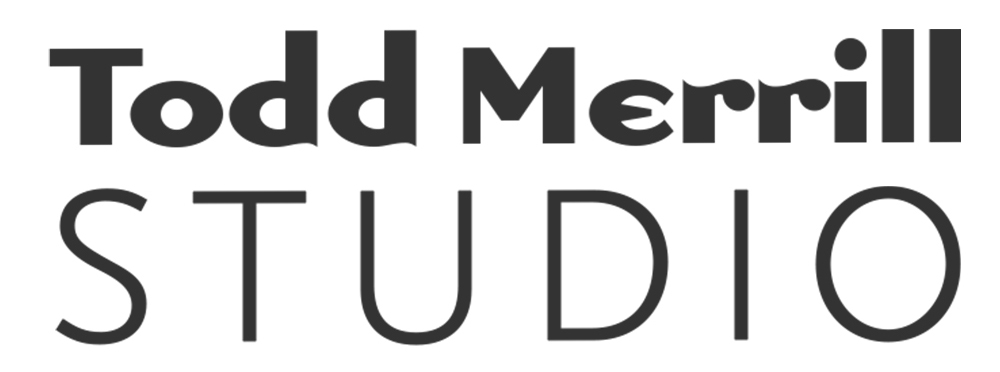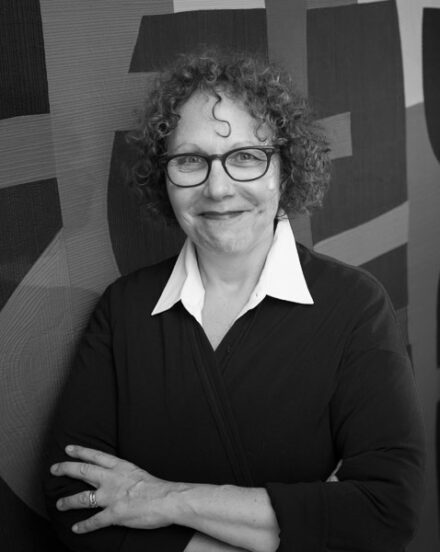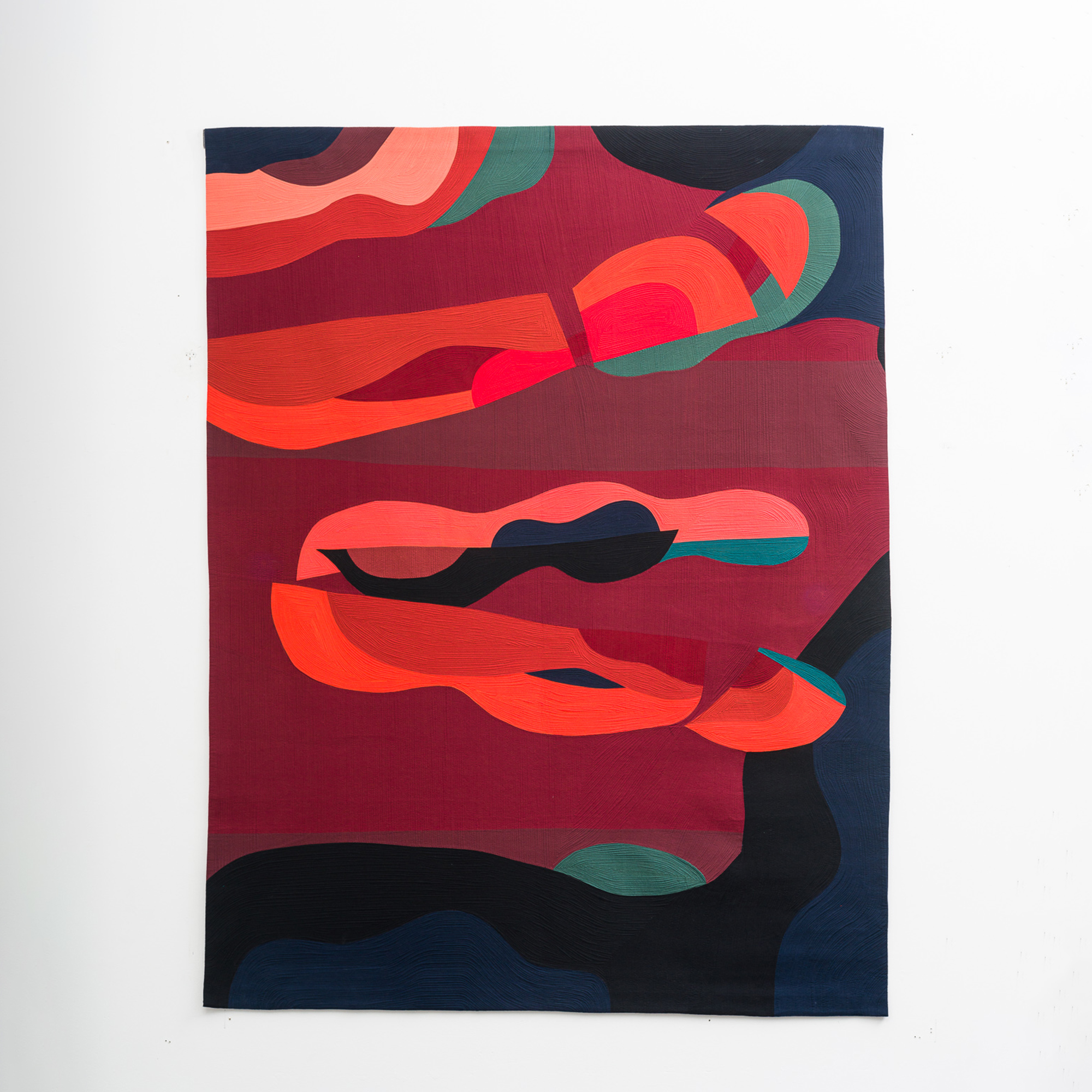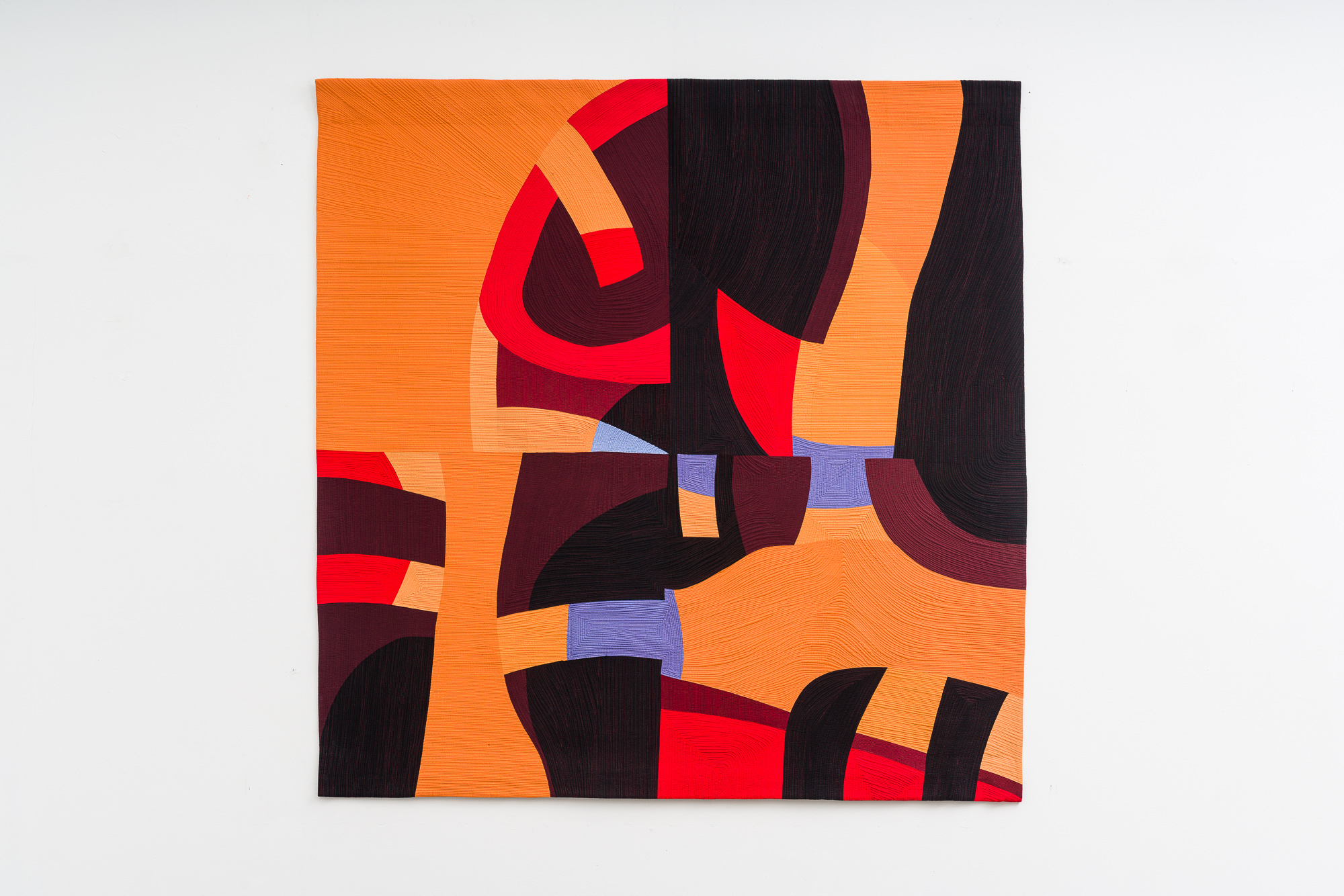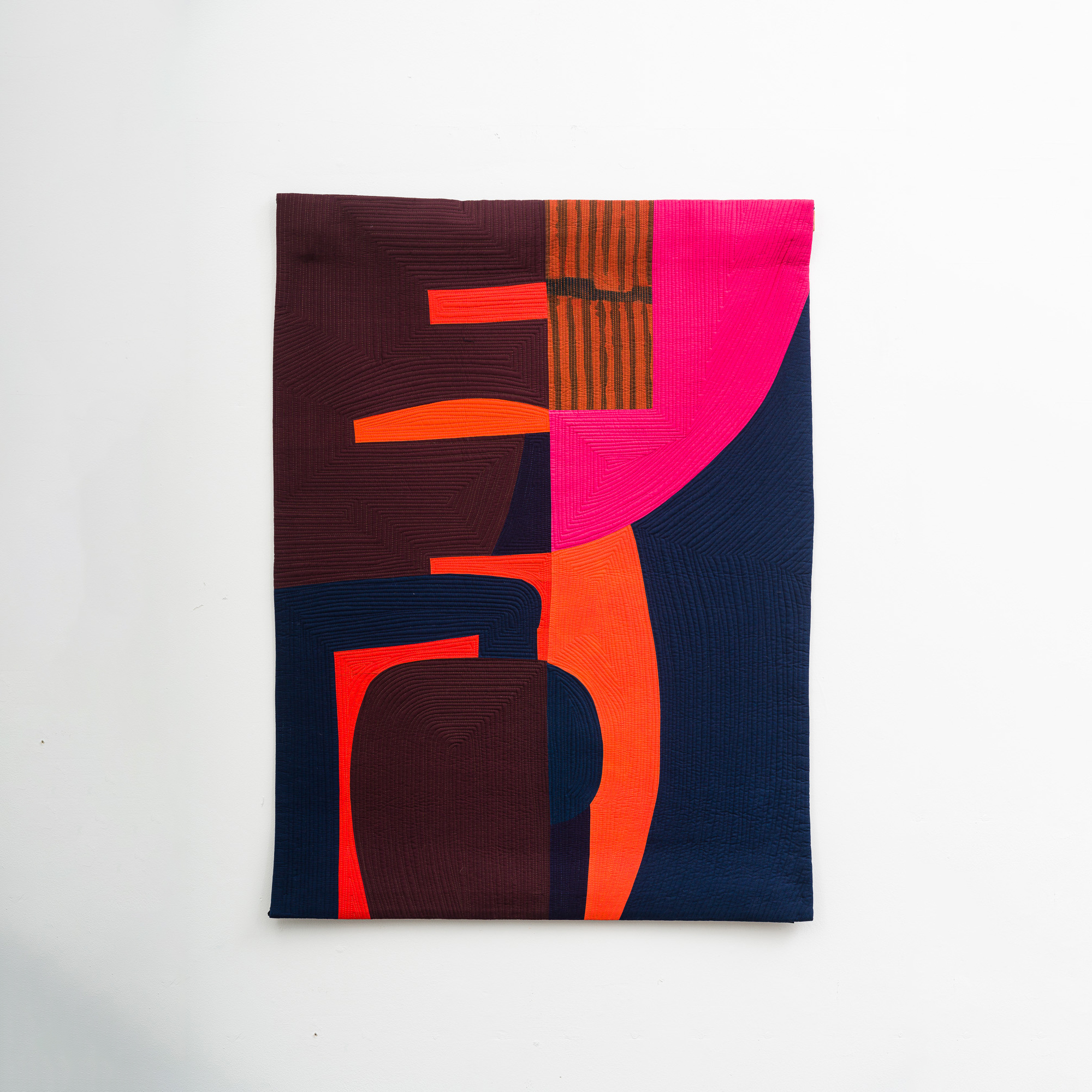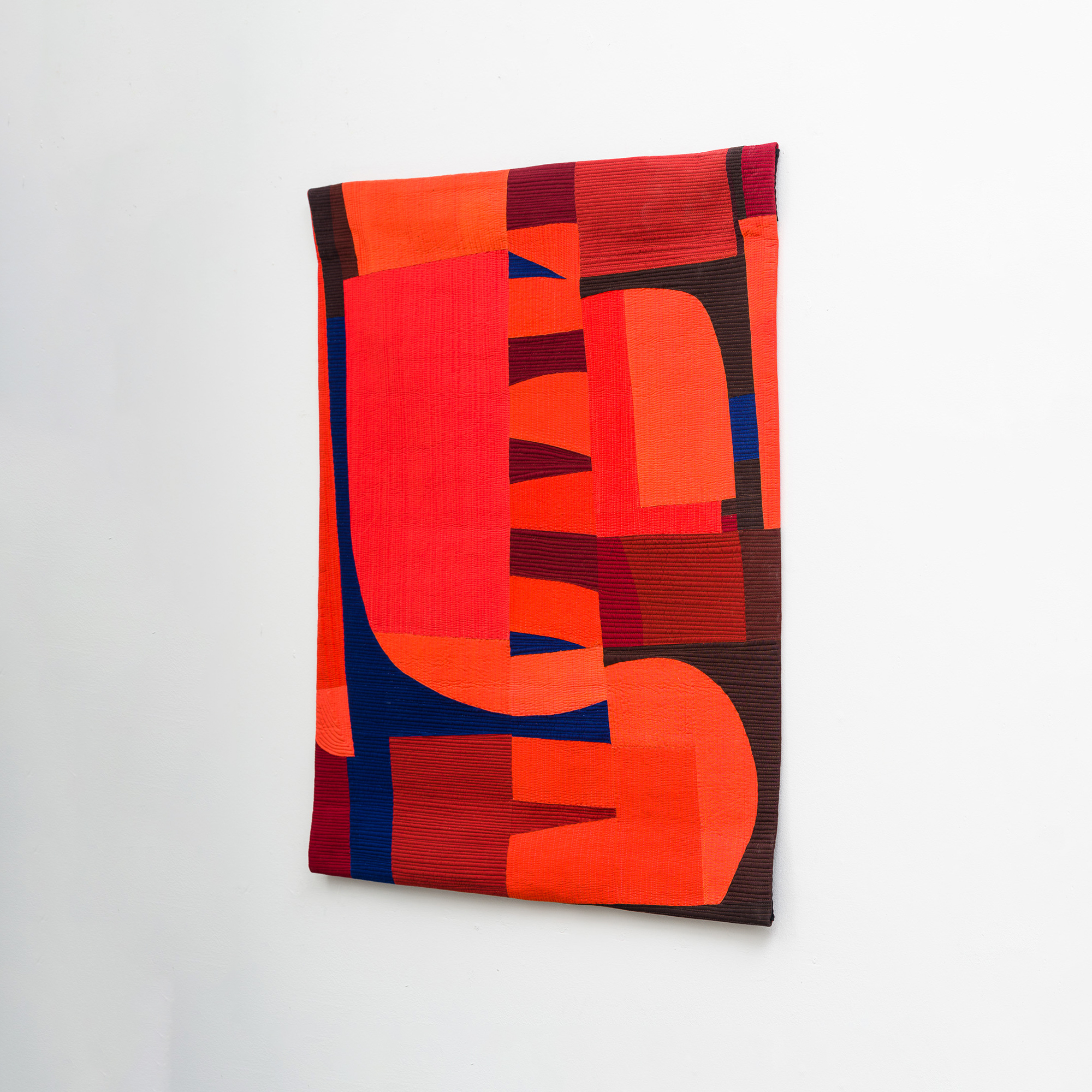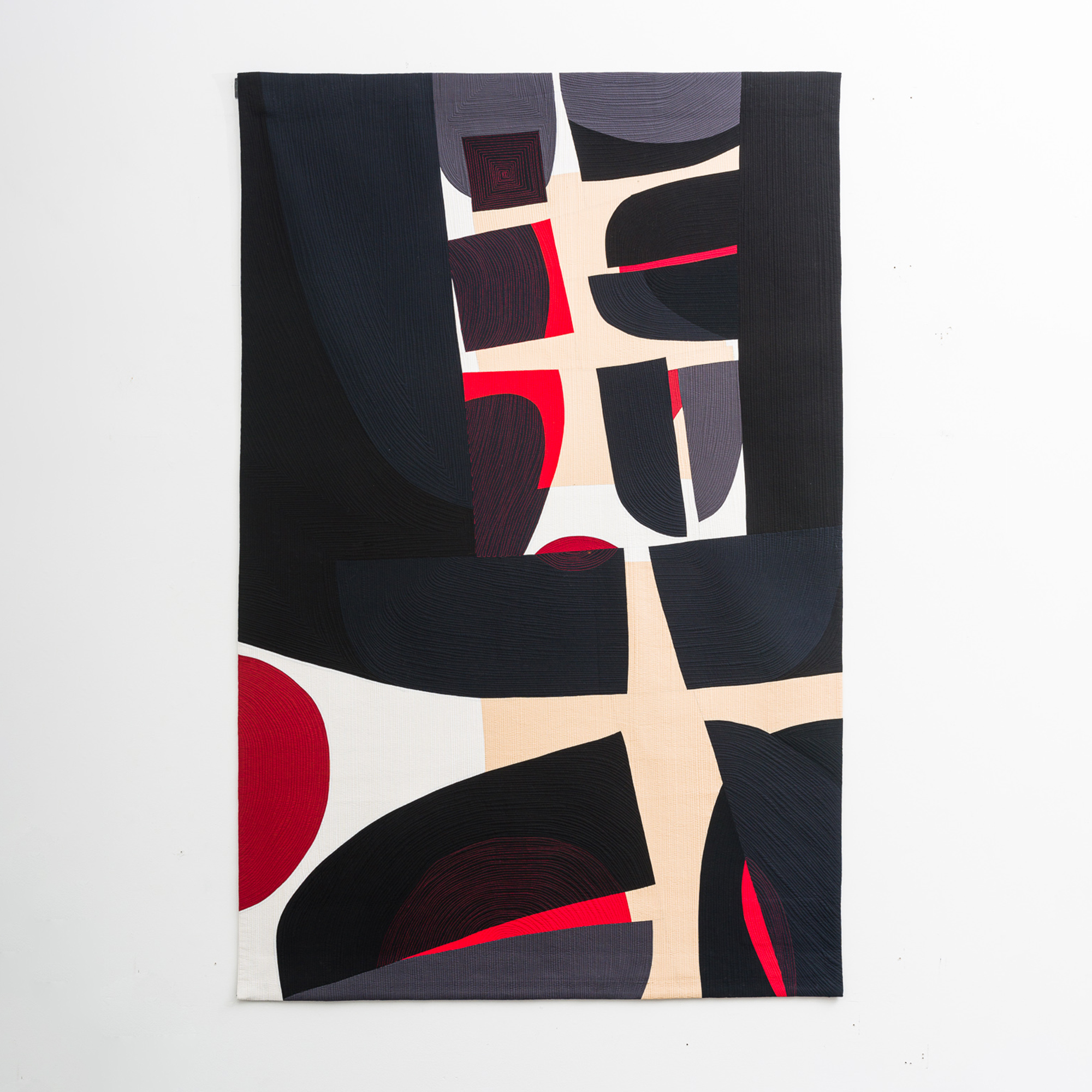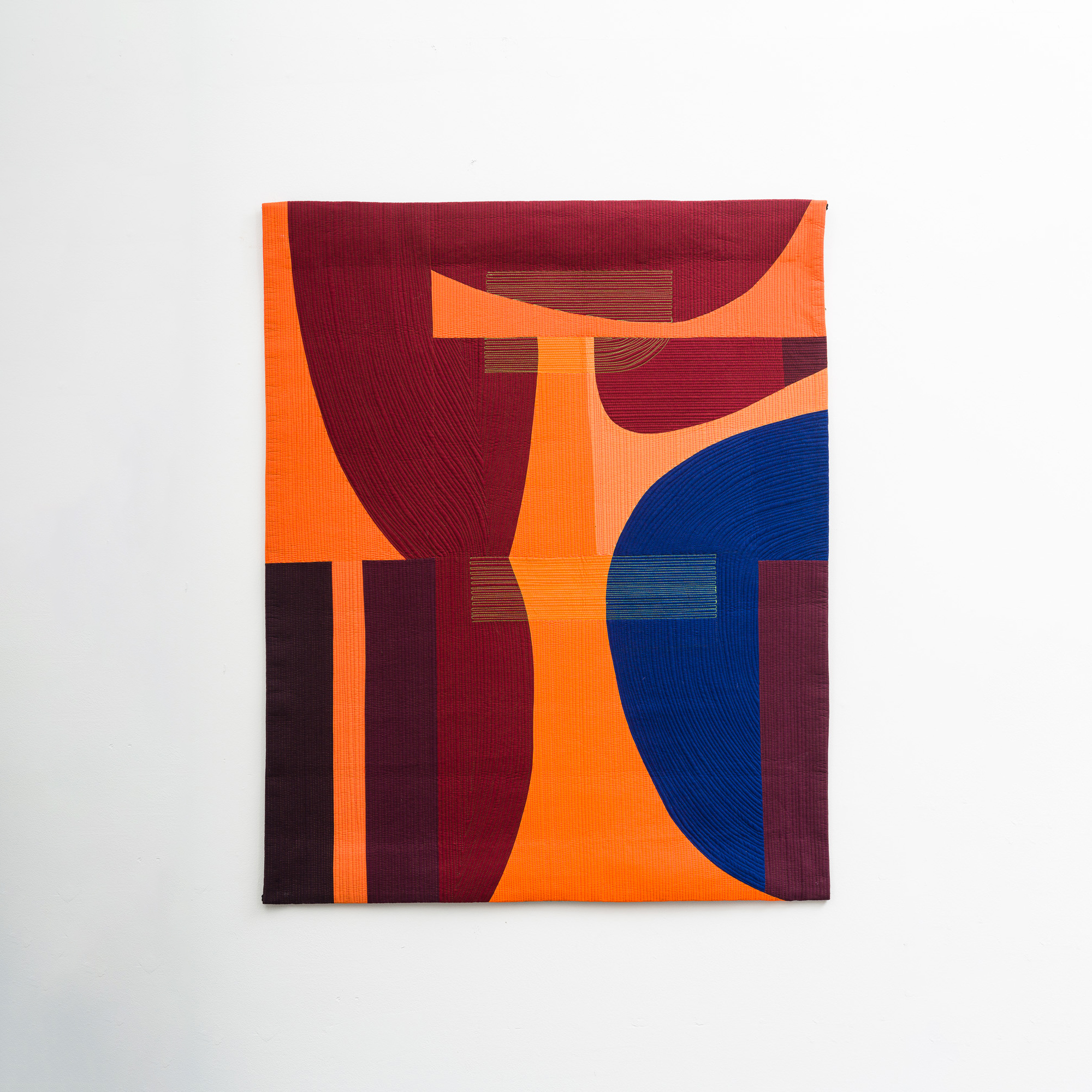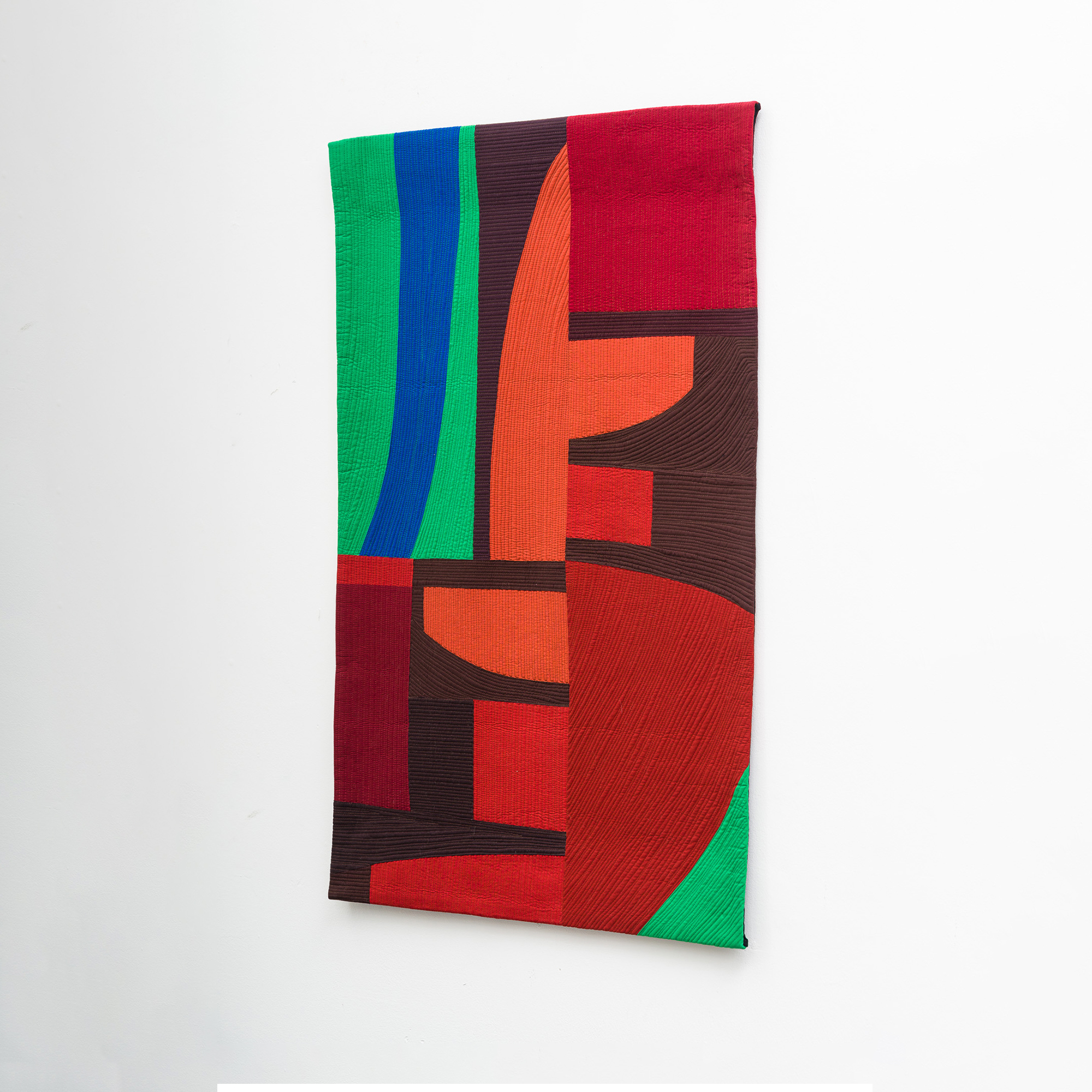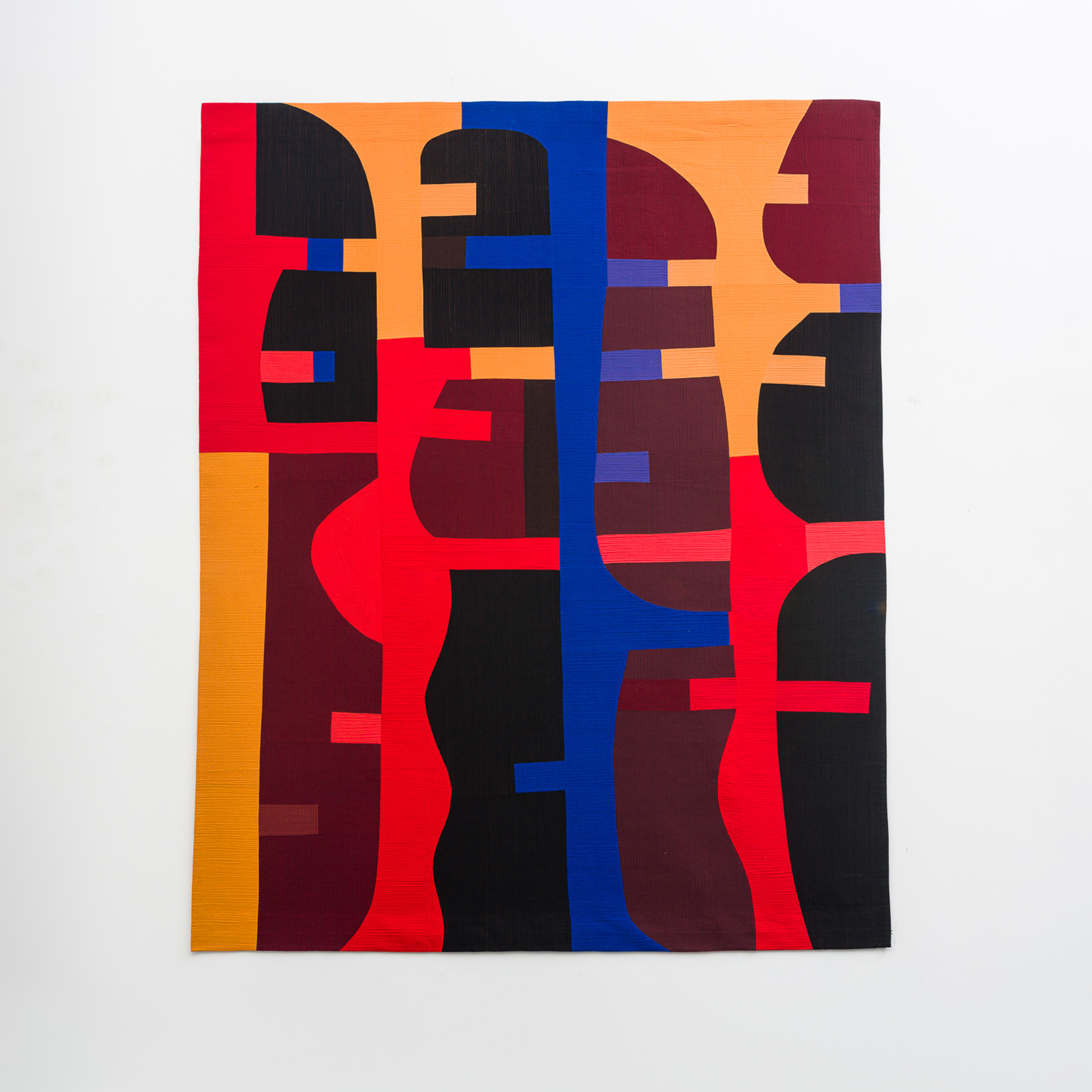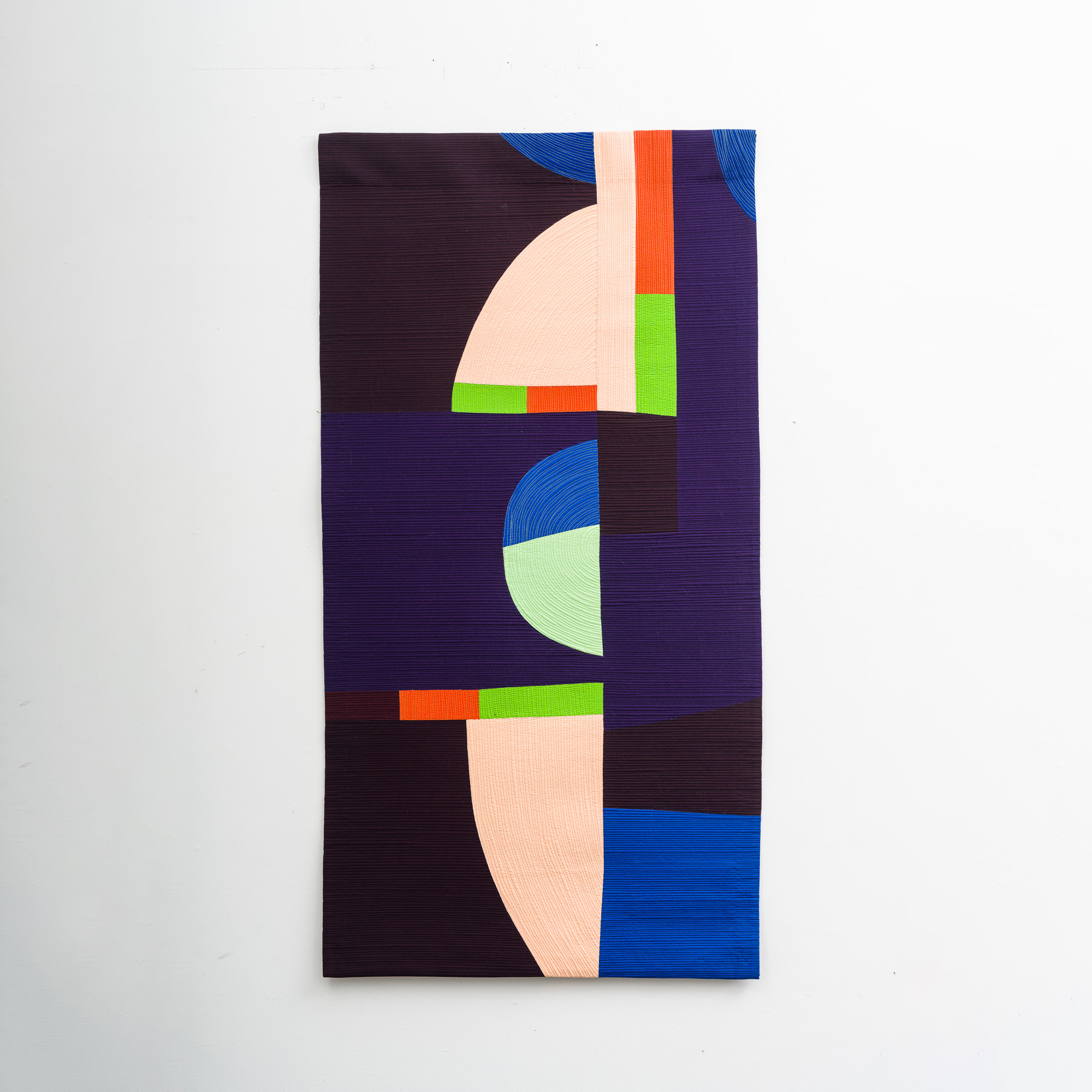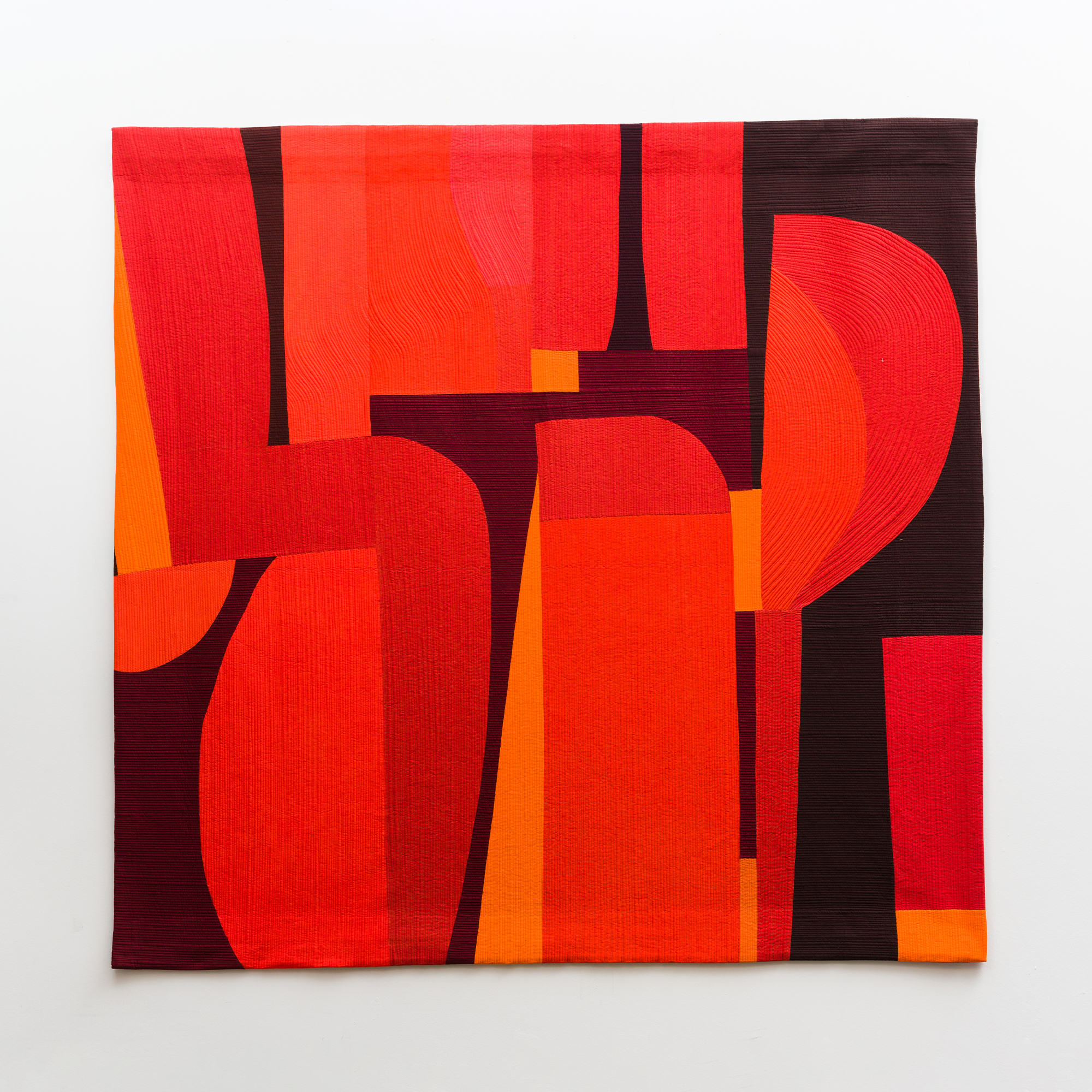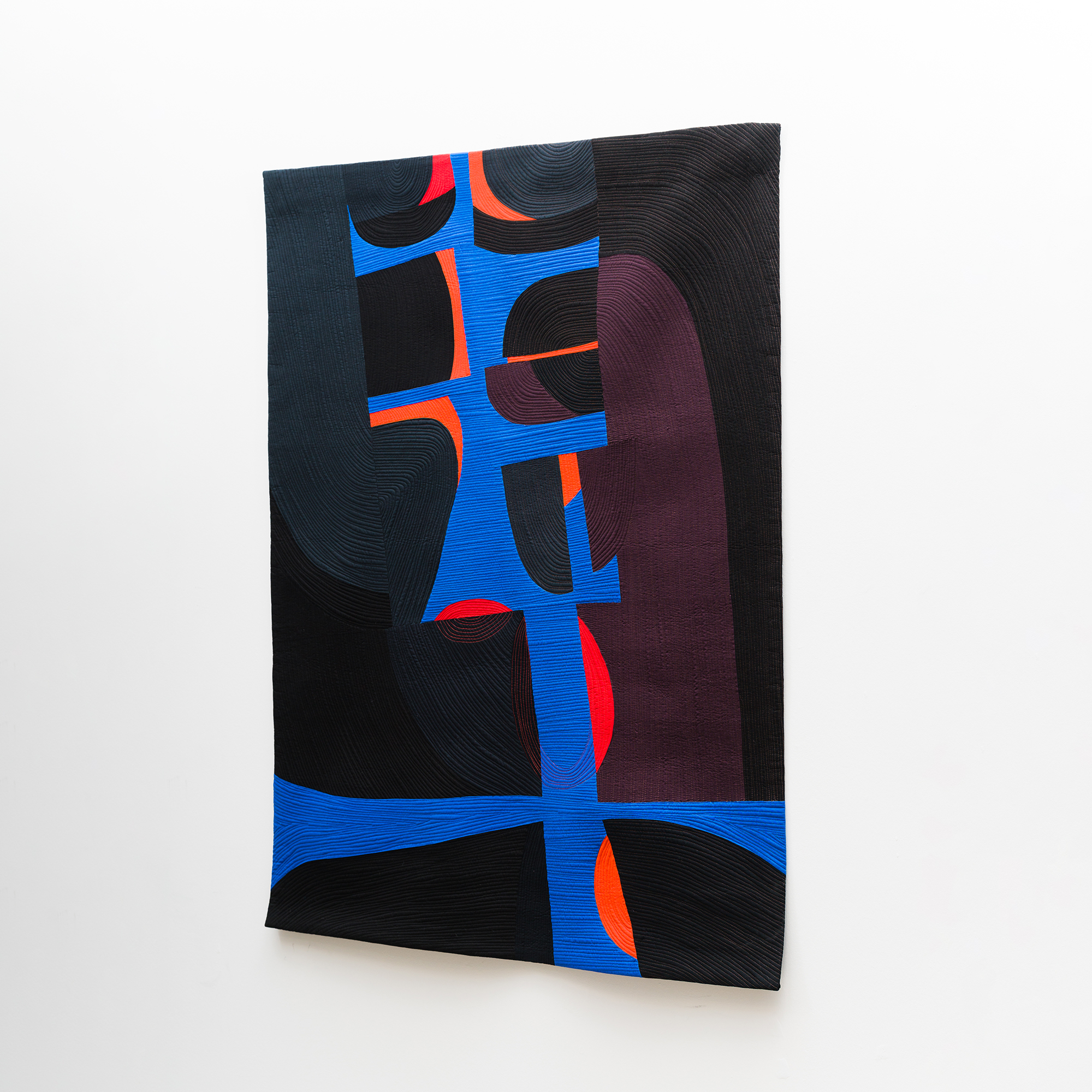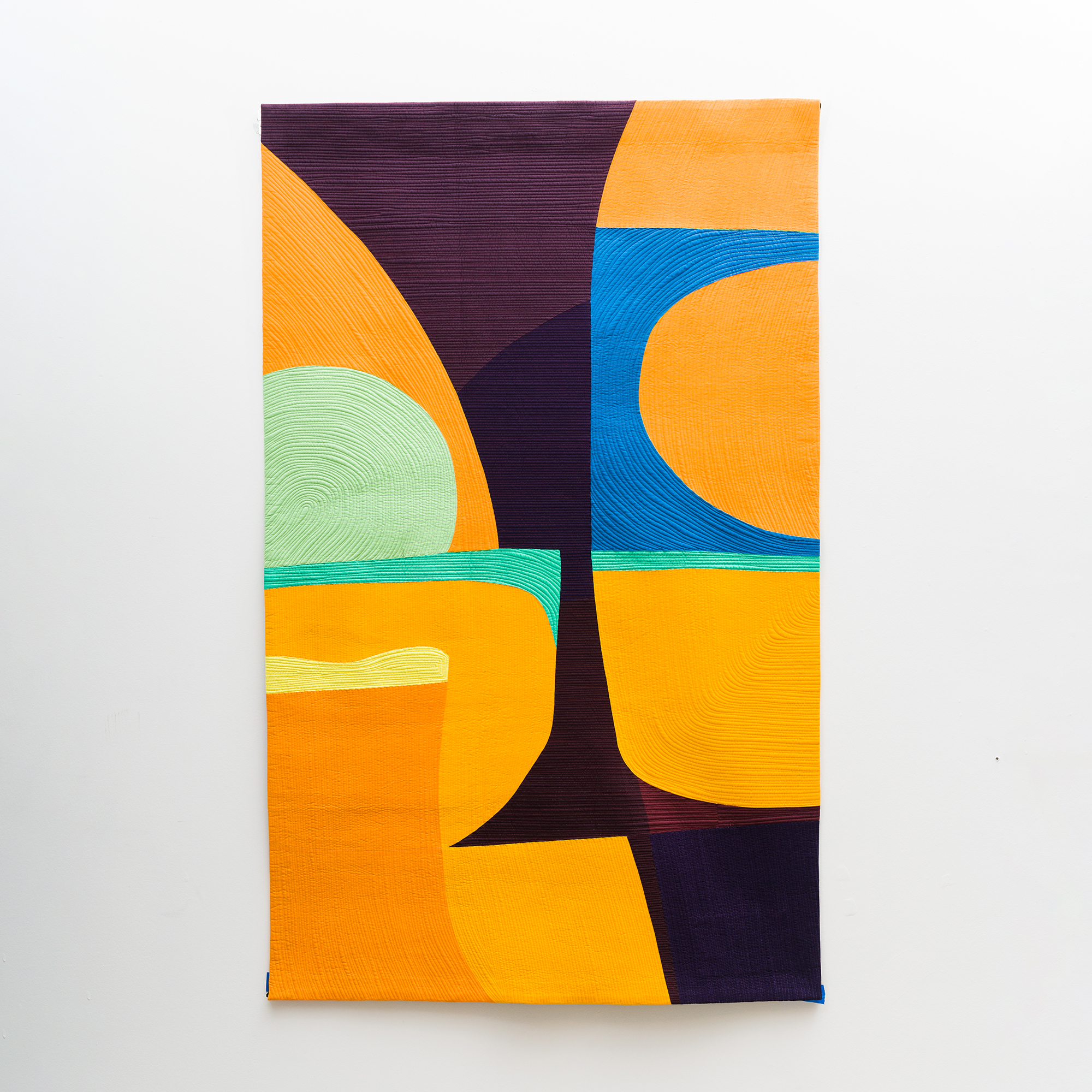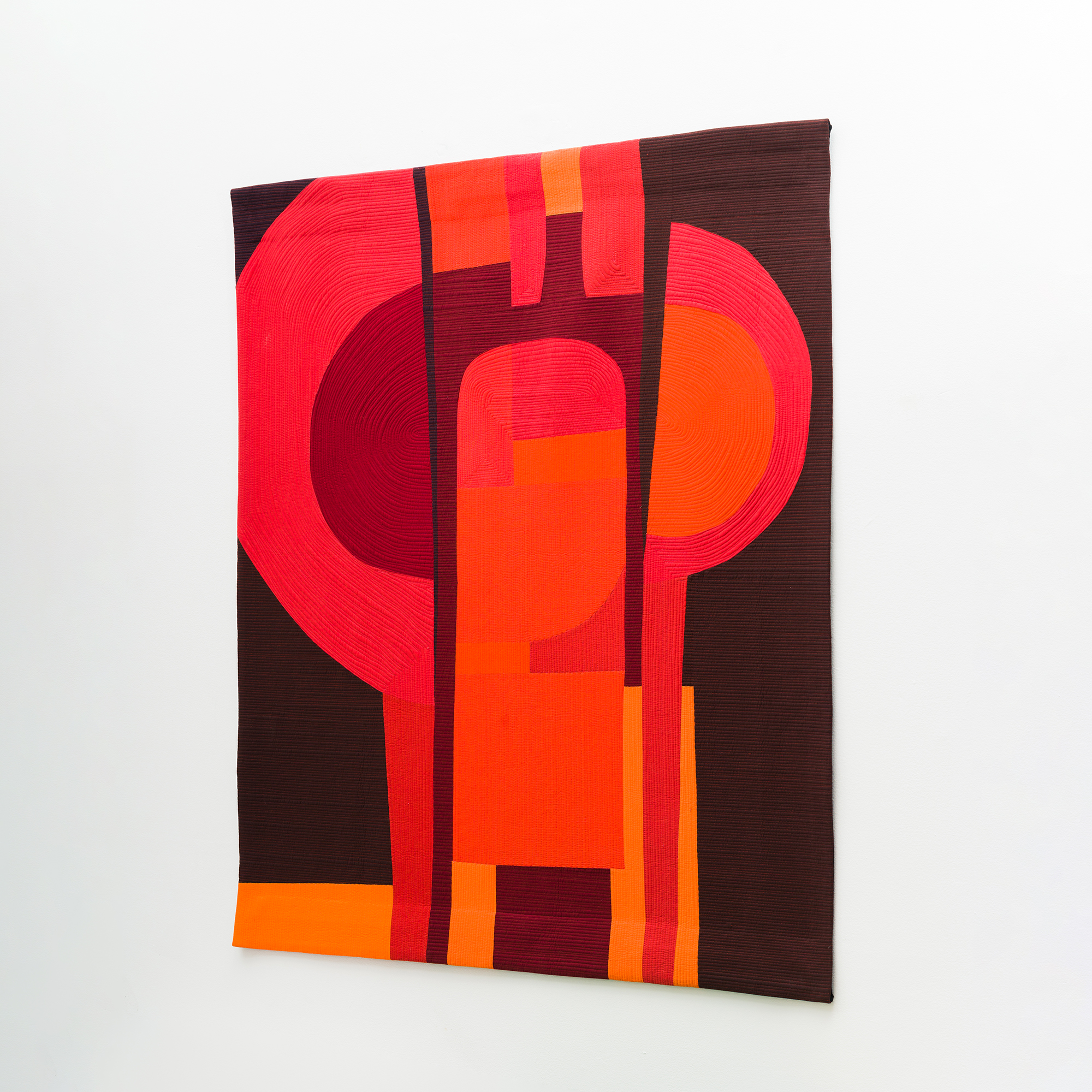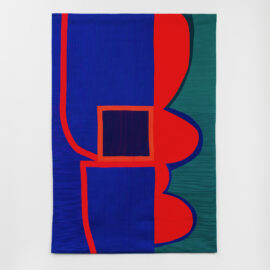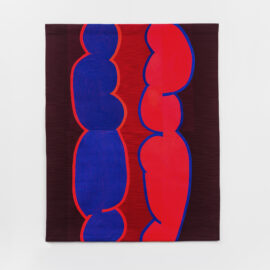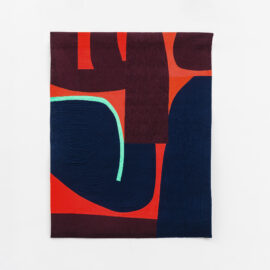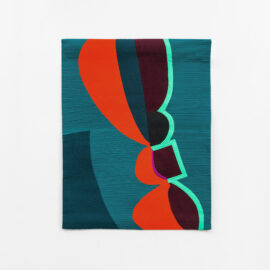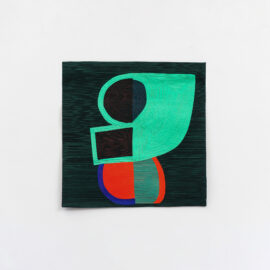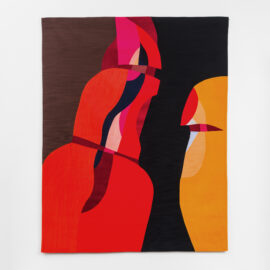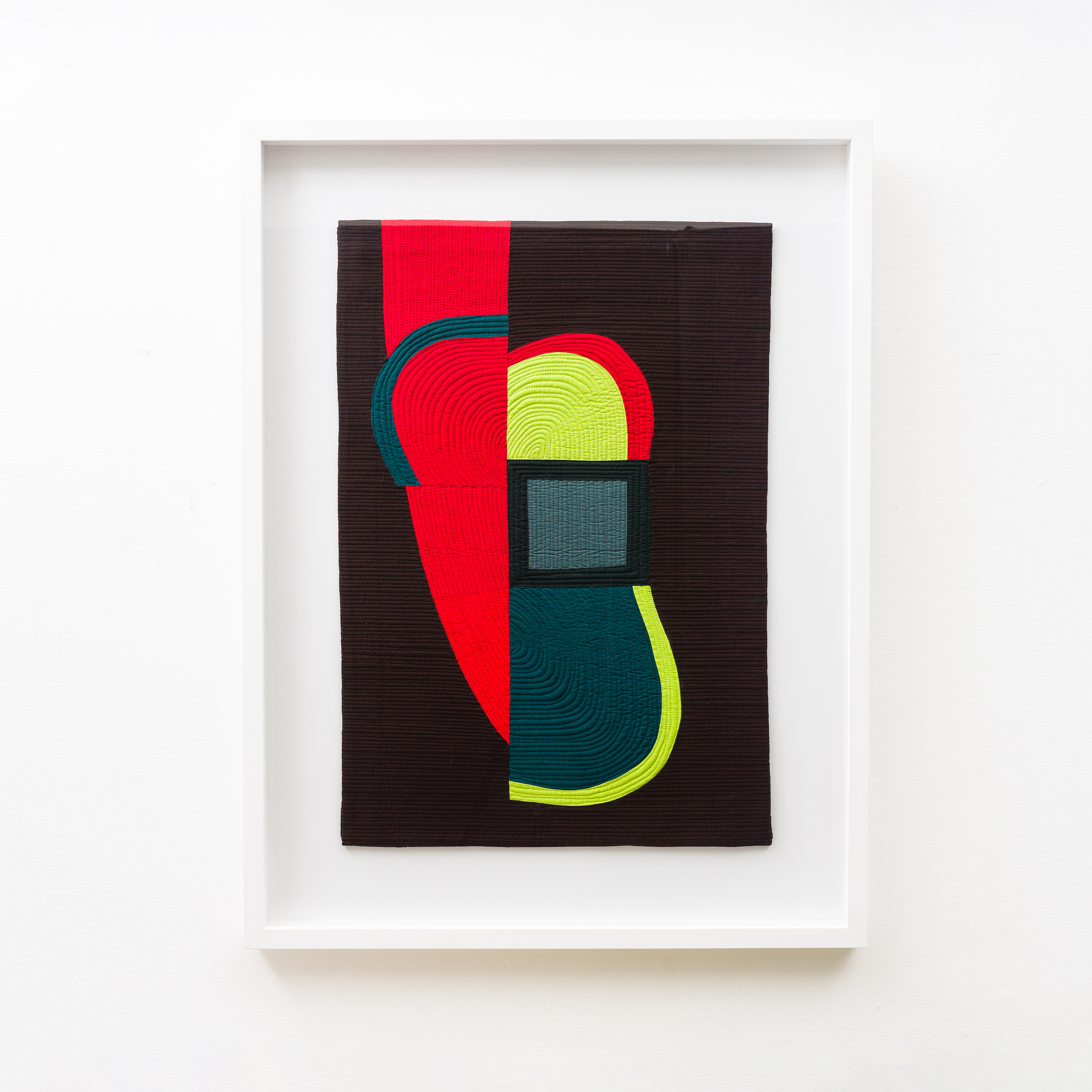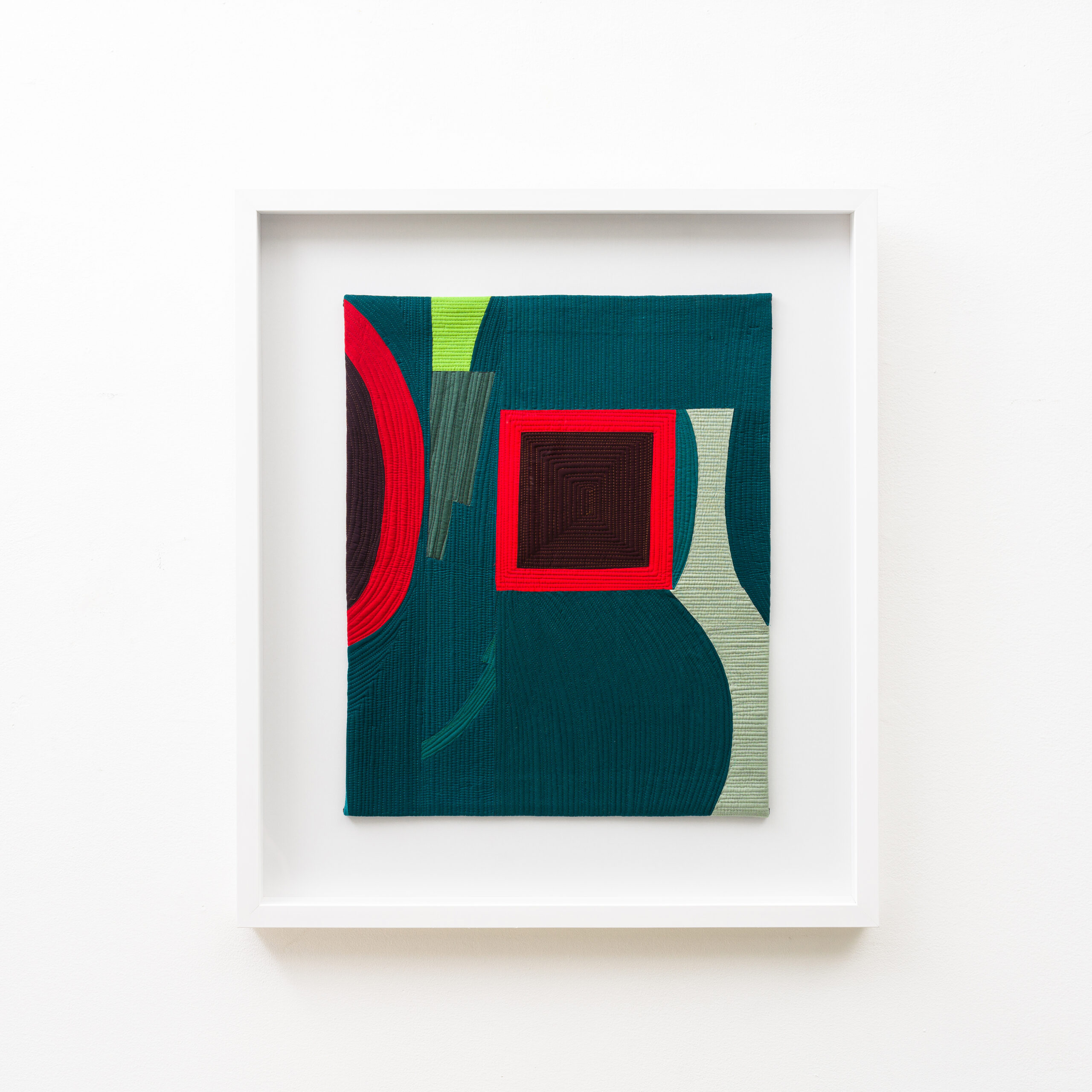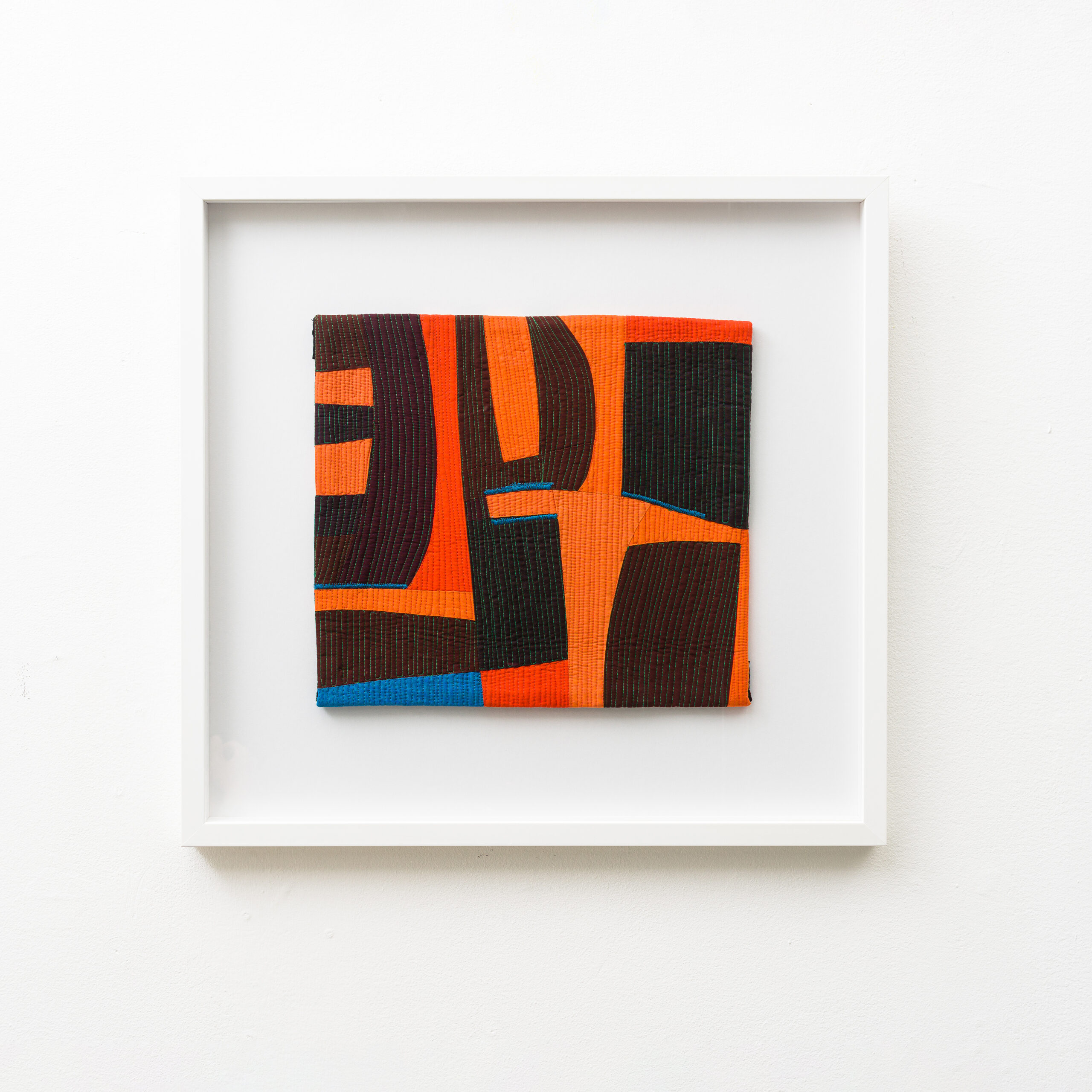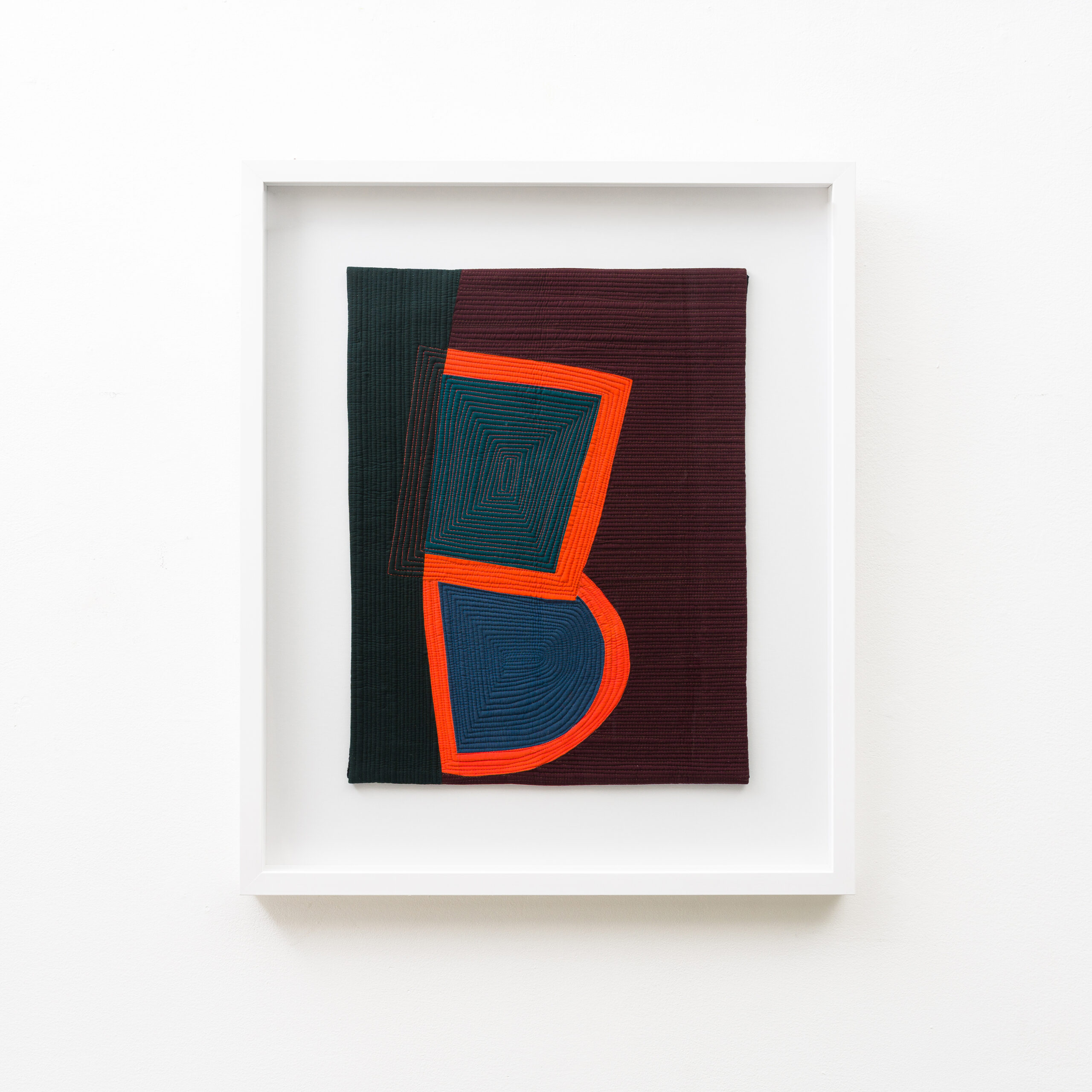By taking ordinary pieces of cotton and transforming them into forceful collages of luminous color, contemporary textile artist Gerri Spilka brings together disparate elements of quilting, modern abstraction, and human interaction to re-imagine work of traditional sewing into a visual narrative on the collective experience.
If her large scale textile abstractions don’t immediately read as quilts it is probably because her artistic practice pushes notably beyond many of the notions of traditional quilt making. Sidestepping the meticulous, predefined patterns typical in the medium, she favors bold, uncompromising forms jockeying for space in compositions devoid of any defined foreground or background. Similar to the active force of a painter, Spilka uses a rotary cutter to slice huge swaths of her hand-dyed cotton fabrics, the broad physical strokes producing freeform shapes by intuition. Sometimes beginning with a “small visual delight” such as a curve meeting a straight edge, or the visual resonance of two tones colliding, she begins to compose these pieces into “units.” In traditional quilt making units are pieced together to form “blocks” that are then repeated to achieve a final pattern. Unconstrained by the grid, Spilka manipulates her units, sometimes by hand, sometimes digitally, exploring every variable and possibility to achieve the unique interplay within each finished piece.
Spilka’s works bypass the purely domestic nature of typical quilting most remarkably for their color, scale, and movement. With some as large as 95 inches, her works often have the presence of murals, or a modernist idea of a grand tapestry. Admittedly she favors large scale for the opportunity to place the viewer viscerally in the work. It is at this scale that you are best able to perceive the subtle movements created by the intricate, rhythmic stitching that travels along each form. While formally a structural component holding the layers together, the quilting stitches also establish subtle dimension and texture that can be transformed with the use of contrasting thread colors or directional shifts. Spilka hand dyes her fabrics in an antique ringer washer giving her complete control of her palette, which is confident and refined, and often restrained. With only a few colors tasked with carrying the image, often one will give a vibrating jolt cutting through the harmony of the others.
While her imagery is essentially non-objective, her abstract compositions have a certain universality. Spilka tends to work in series, each with evocative and slightly suggestive titles, such as “Night Moves” or “Interactions,” that allow the viewer to free associate. If her biomorphic forms seem figurative, it is merely the suggestion of an interaction between figures, rather than representation. That the works can sometimes read as landscape or more specifically topography is no coincidence. Before making her artistic practice full time, Spilka (herself a life-long urbanite) had a thriving career in urban planning, community development, and philanthropy. Though she has worked artistically since childhood, her educational background was rooted in biology, psychology, architecture, and planning. While these disparate influences are the foundation of her abstractions, her outside influences are equally diverse and often surprising.
It is easy to see the impression artists like Ellsworth Kelly and Josef Albers have on her work. The improvisational and somewhat impulsive nature of jazz also seems evident. It is exciting to connect the language of urban graffiti to her work in both color and form, and the endless mutability and possibility of computer graphics. In his singular regard to material honesty, architect Louis Kahn famously asked a brick what did it “want to be”? It is easy to picture Spilka, surrounded by bolts of fabric or off cut scraps, asking the same.
Spilka’s work has been widely exhibited nationally and internationally in the U.S., Canada, and Europe. It is held in private collections and in public collections including the International Quilt Museum and Study Center in Lincoln, Nebraska, Park Towne Place Art Collection, and the Fox School of Business at Temple University in Philadelphia, Pennsylvania.

